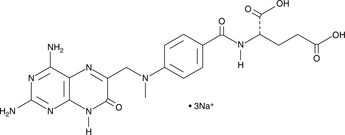Proteases
Proteases is a general term for a class of enzymes that hydrolyze protein peptide chains. According to the way they degrade polypeptides, they are divided into two categories: endopeptidases and telopeptidases. The former can cut the large molecular weight polypeptide chain from the middle to form prions and peptones with smaller molecular weights; the latter can be divided into carboxypeptidase and aminopeptidase, which respectively remove the peptide from the free carboxyl terminus or free amino terminus of the polypeptide one by one. Chain hydrolysis produces amino acids.
A general term for a class of enzymes that hydrolyze peptide bonds in proteins. According to the way they hydrolyze polypeptides, they can be divided into endopeptidases and exopeptidases. Endopeptidase cleaves the interior of the protein molecule to form smaller molecular weight peptones and peptones. Exopeptidase hydrolyzes peptide bonds one by one from the end of the free amino group or carboxyl group of protein molecules, and frees amino acids, the former is aminopeptidase and the latter is carboxypeptidase. Proteases can be classified into serine proteases, sulfhydryl proteases, metalloproteases and aspartic proteases according to their active centers and optimum pH. According to the optimum pH value of its reaction, it is divided into acidic protease, neutral protease and alkaline protease. The proteases used in industrial production are mainly endopeptidases.
Proteases are widely found in animal offal, plant stems and leaves, fruits and microorganisms. Microbial proteases are mainly produced by molds and bacteria, followed by yeast and actinomycetes.
Enzymes that catalyze the hydrolysis of proteins. There are many kinds, the important ones are pepsin, trypsin, cathepsin, papain and subtilisin. Proteases have strict selectivity for the reaction substrates they act on. A protease can only act on certain peptide bonds in protein molecules, such as the peptide bonds formed by the hydrolysis of basic amino acids catalyzed by trypsin. Proteases are widely distributed, mainly in the digestive tract of humans and animals, and are abundant in plants and microorganisms. Due to limited animal and plant resources, the industrial production of protease preparations is mainly prepared by fermentation of microorganisms such as Bacillus subtilis and Aspergillus terrestris.
Targets for Proteases
- Caspase(88)
- Aminopeptidase(19)
- ACE(69)
- Calpains(11)
- Carboxypeptidase(8)
- Cathepsin(68)
- DPP-4(18)
- Elastase(23)
- Gamma Secretase(46)
- HCV Protease(35)
- HSP(95)
- HIV Integrase(29)
- HIV Protease(32)
- MMP(199)
- NS3/4a protease(4)
- Serine Protease(11)
- Thrombin(46)
- Urokinase(2)
- Cysteine Protease(0)
- Other Proteases(15)
- Tyrosinases(44)
- 15-PGDH(1)
- Acetyl-CoA Carboxylase(13)
- Acyltransferase(53)
- Aldehyde Dehydrogenase (ALDH)(27)
- Aminoacyl-tRNA Synthetase(9)
- ATGL(1)
- Dipeptidyl Peptidase(47)
- Drug Metabolite(453)
- E1/E2/E3 Enzyme(82)
- Endogenous Metabolite(1555)
- FABP(30)
- Farnesyl Transferase(21)
- Glutaminase(14)
- Glutathione Peroxidase(14)
- Isocitrate Dehydrogenase (IDH)(26)
- Lactate Dehydrogenase(17)
- Lipoxygenase(231)
- Mitochondrial Metabolism(201)
- NEDD8-activating Enzyme(6)
- Neprilysin(12)
- PAI-1(12)
- Ser/Thr Protease(40)
- Tryptophan Hydroxylase(11)
- Xanthine Oxidase(16)
- MALT1(10)
- PCSK9(1)
Products for Proteases
- Cat.No. 상품명 정보
-
GC40378
5(S)-HEPE
5(S)-HEPE is produced by 5-lipoxygenase catalyzed oxidation of eicosapentaenoic acid (EPA).

-
GC40460
5(S)-HETE
5(S)-Hydroxyeicosatetraenoic Acid
5(S)-HETE is produced by the action of 5-LO on arachidonic acid to give 5(S)-HpETE, followed by reduction of the hydroperoxide.
-
GC40829
5(S)-HETE lactone
5(S)-Hydroxyeicosatetraenoic Acid lactone
5(S)-HETE lactone is a cyclic ester formed by acid-catalyzed nucleophilic addition of the C-5 hydroxyl to the C-1 carboxyl of 5(S)-HETE.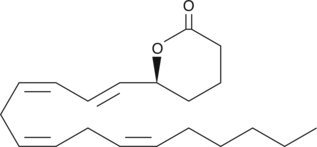
-
GC46679
5(S)-HETE-d8
5(S)-Hydroxyeicosatetraenoic Acid-d8
An internal standard for the quantification of 5-HETE
-
GC42479
5(S)-HETrE
5(S)-HETrE is produced by the action of 5-LO when mead acid is the substrate.

-
GC41105
5(S)-HpEPE
5(S)-HpEPE is a monohydroperoxy polyunsaturated fatty acid produced by the action of 5-LO on EPA.

-
GC40784
5(Z),8(Z),14(Z)-Eicosatrienoic Acid
5(Z),8(Z),14(Z)-Eicosatrienoic acid is a polyunsaturated fatty acid that can be a substrate for 5-lipoxygenase (5-LO).

-
GC40830
5,6-dehydro Arachidonic Acid
5,6dehydro AA
5,6-dehydro Arachidonic acid is an analog of arachidonic acid with an acetylene in the 5,6 position.
-
GC18542
5,6-dihydro-5-Fluorouracil
5-DHFU, 5-Fluorodihydropyrimidine-2,4-dione, 5-Fluorodihydrouracil, 5-Fluoro-5,6-dihydrouracil, 5-FUH2
5,6-dihydro-5-Fluorouracil (5-FUH2) is formed by the hydrogenation of 5-fluorouracil via the enzyme dihydropyrimidine dehydrogenase (DPD).
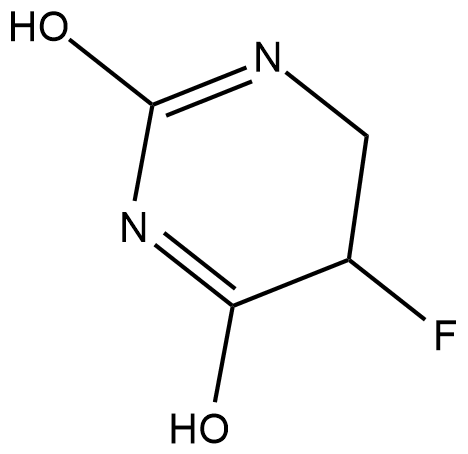
-
GC35152
5,6-Dihydro-5-methyluracil
티민의 중간 분해 생성물인 5,6-Dihydro-5-methyluracil(Dihydrothymine)은 동물이나 식물에서 유래합니다.
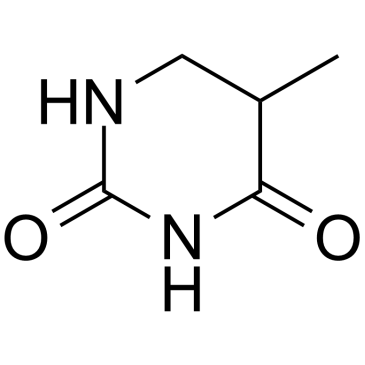
-
GC33650
5,6-Dihydrouracil
NSC 11867
우라실의 대사산물인 5,6-Dihydrouracil(5,6-5,6-Dihydrouracil)은 DPD(dihydropyrimidine dehydrogenase) 결핍을 식별하기 위한 마커로 사용할 수 있습니다.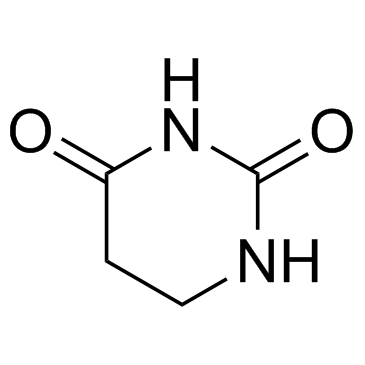
-
GC33502
5,6-Dihydrouridine
DHU
5,6-Dihydrouridine은 박테리아, 진핵생물 및 일부 고세균에서 tRNA의 D 루프에서 보존된 위치에서 발견되는 변형된 염기입니다.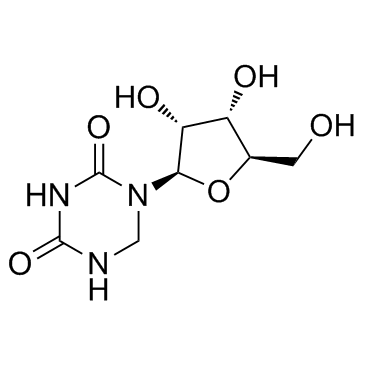
-
GC42484
5,6-dihydroxy Indole
Dopamine lutine
멜라닌 전구체인 5,6-dihydroxy Indole은 광범위한 항균, 항진균, 항바이러스, 항기생충 활성을 가지고 있습니다.
-
GC38286
5,6-Dimethyl-1H-benzo[d]imidazole
5,6-디메틸-1H-벤조[d]이미다졸은 내인성 대사산물입니다.
![5,6-Dimethyl-1H-benzo[d]imidazole Chemical Structure 5,6-Dimethyl-1H-benzo[d]imidazole Chemical Structure](/media/struct/GC3/GC38286.png)
-
GC18466
5,6-epoxy-13-cis Retinoic Acid
5,6-epoxy-13-cis RA
5,6-epoxy-13-cis Retinoic acid is a metabolite of 13-cis retinoic acid.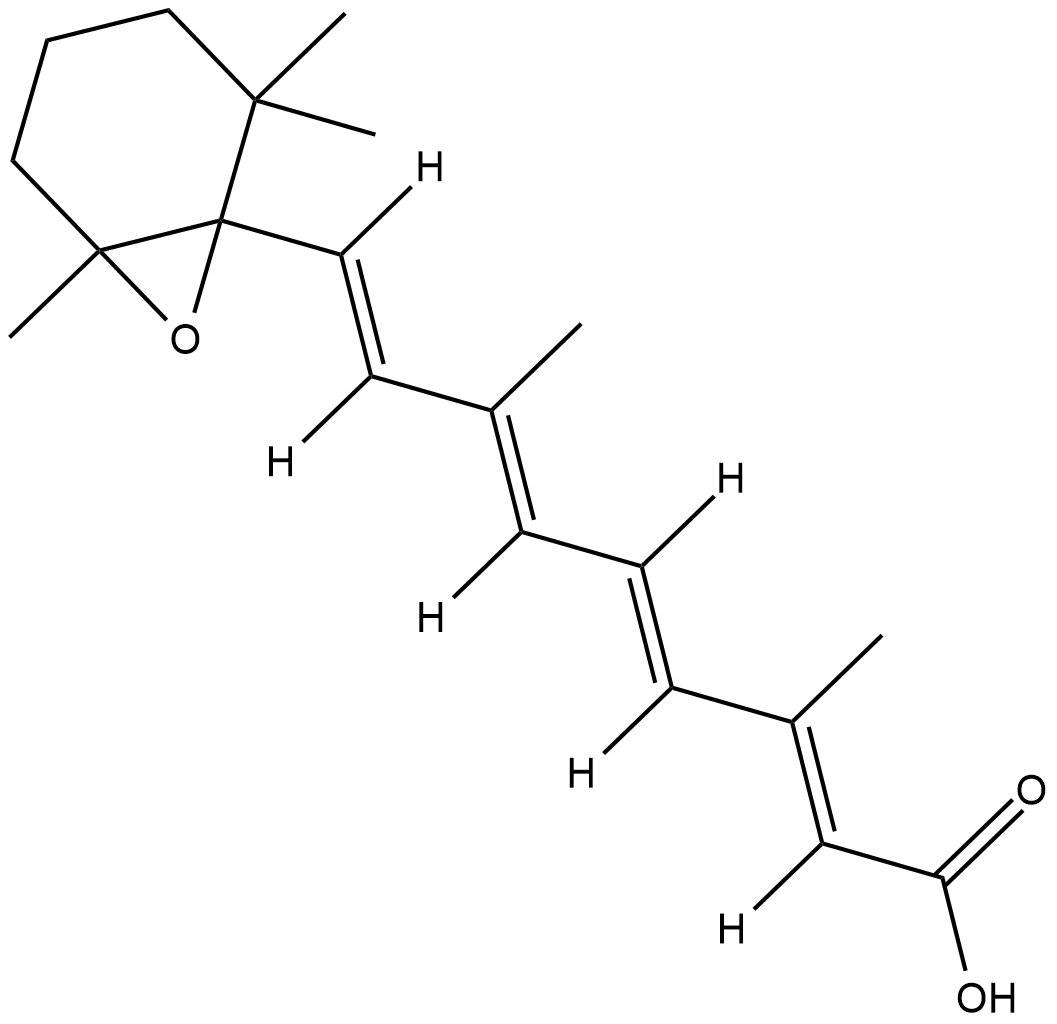
-
GC35150
5,7,4'-Trimethoxyflavone
5,7,4'-Trimethoxyflavone은 태국의 유명한 약용 식물인 Kaempferia parviflora(KP)에서 분리됩니다. 5,7,4'-Trimethoxyflavone은 sub-G1 단계의 증가, DNA 단편화, annexin-V/PI 염색, Bax/Bcl-xL 비율, caspase-3의 단백질 분해 활성화 및 폴리 (ADP-ribose) polymerase (PARP) protein.5,7,4'-Trimethoxyflavone은 농도 의존적 \u200b\u200b방식으로 SNU-16 인간 위암 세포의 증식을 억제하는 데 상당히 효과적입니다.
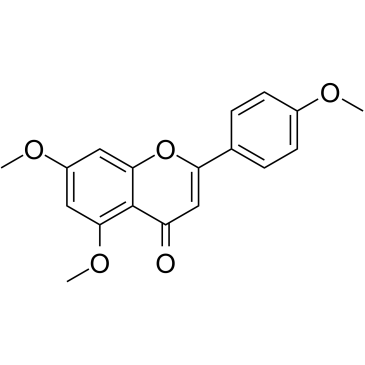
-
GN10629
5,7-dihydroxychromone
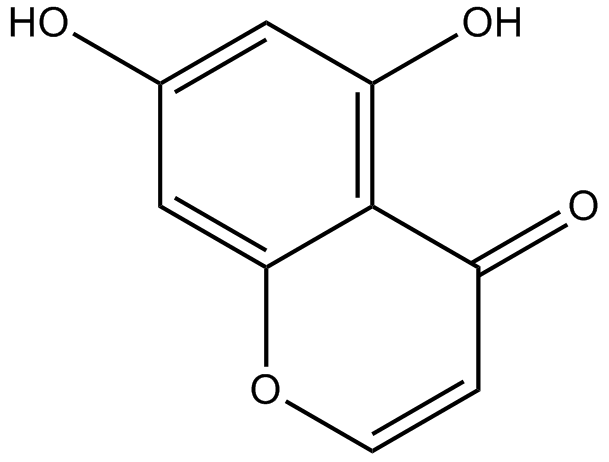
-
GC52227
5-(3',4'-Dihydroxyphenyl)-γ-Valerolactone
(±)-δ-(3,4-Dihydroxyphenyl)-γ-Valerolactone, 5-(3',4'-Dihydroxyphenyl)-γ-VL
An active metabolite of various polyphenols
-
GC38882
5-ALA benzyl ester hydrochloride
5-ALA 벤질 에스테르 염산염(Benzyl-ALA 염산염)은 광검출제로 사용되는 프로토포르피린 전구체입니다. 5-ALA 벤질 에스테르 염산염은 결장암 세포주에서 프로토포르피린 IX(PPIX) 축적을 유도합니다.
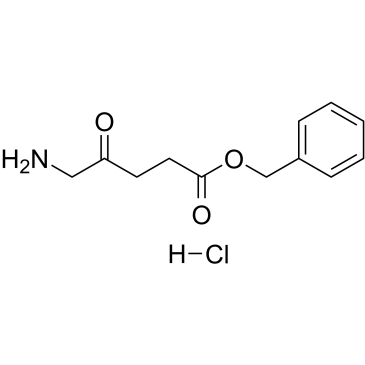
-
GC35156
5-Amino-3H-imidazole-4-Carboxamide
5-아미노-3H-이미다졸-4-카르복사미드(AICA)는 일반적으로 퓨린의 합성 및 특히 핵염기 아데닌 및 구아닌의 합성을 위한 중요한 전구체입니다.
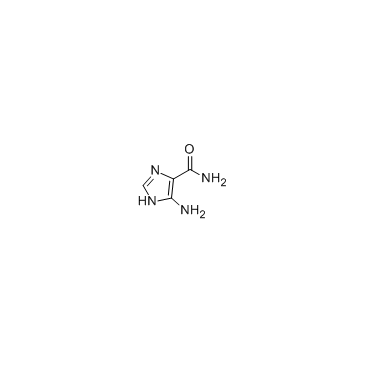
-
GC32608
5-Amino-4-oxopentanoic acid
5-아미노-4-옥소펜타노산(5-ALA)은 헴 생합성에서 속도 제한 역할을 하는 비단백질 아미노산입니다.
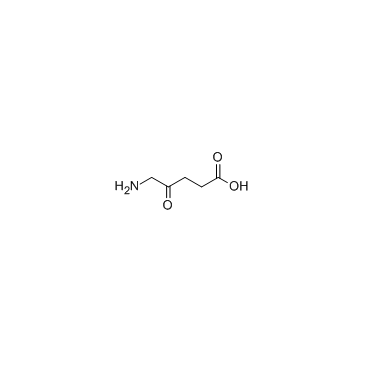
-
GC45356
5-Aminolevulinic Acid (hydrochloride)

-
GC52413
5-Aminosalicylic Acid-d7
5-ASA-d7, Mesalamine-d7, Mesalazine-d7
An internal standard for the quantification of 5-aminosalicylic acid
-
GC12713
5-Aminovaleric acid hydrochloride
5-아미노발레르산 염산염은 감마-아미노부티르산(GABA)의 메틸렌 동족체로 작용하고 약한 GABA 작용제로 기능하는 것으로 여겨집니다.
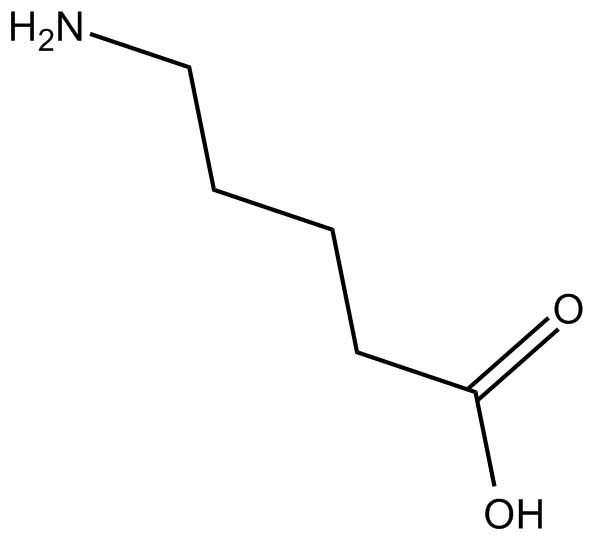
-
GN10062
5-HTP

-
GC49655
5-hydroxy Buspirone
A metabolite of buspirone

-
GC42546
5-hydroxy Diclofenac
5-hydroxy Diclofenac is a metabolite of the NSAID diclofenac formed by the cytochrome P450 (CYP) isoform CYP3A4.

-
GC49119
5-hydroxy Flunixin
A metabolite of flunixin

-
GC49315
5-hydroxy Indomethacin
O-Desmethyl Indomethacin
A metabolite of indomethacin
-
GC41312
5-hydroxy Omeprazole
5-hydroxy OMEP, 5-hydroxy OMP, 5-hydroxy OMZ
5-hydroxy Omeprazole is a major metabolite of omeprazole, an inhibitor of the gastric H+/K+-ATPase pump.
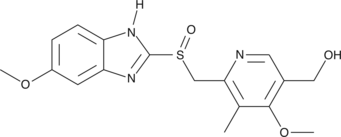
-
GC42549
5-hydroxy Thiabendazole
5-OH TBZ
5-hydroxy Thiabendazole (5-OH TBZ) is a major metabolite of the anthelmintic thiabendazole.
-
GC12829
5-hydroxy Tryptophol
NSC 84416
5-하이드록시 트립토폴은 포유동물의 세로토닌 대사산물로 급성 알코올 섭취의 지표로 작용합니다.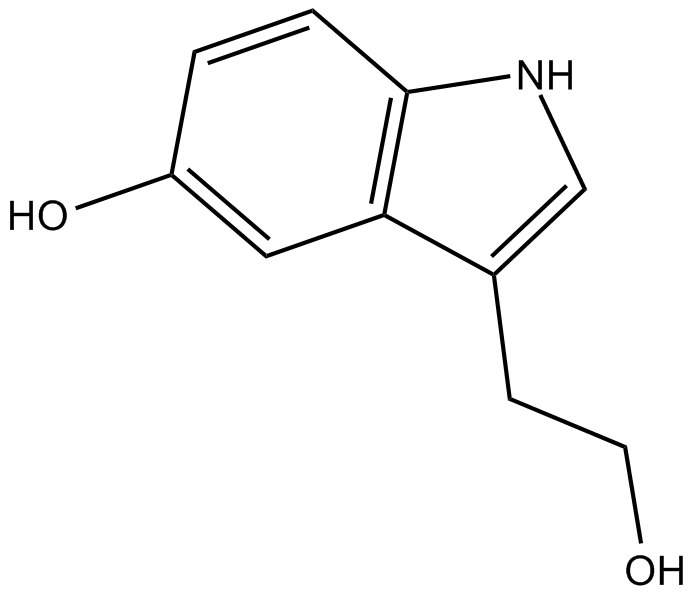
-
GC60529
5-Hydroxy-2'-deoxyuridine
5-OHdU
5-Hydroxy-2'-deoxyuridine(5-OHdU)은 2'-Deoxycytidine의 안정적인 주요 산화 생성물입니다.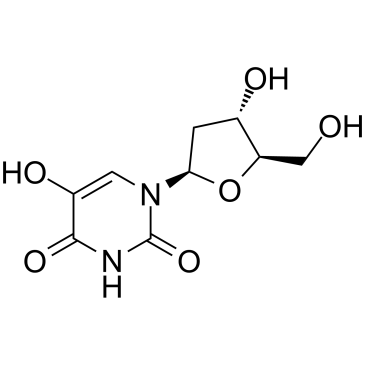
-
GC42550
5-hydroxy-6-methoxy (S)-Duloxetine
5-hydroxy-6-methoxy (S)-Duloxetine is a metabolite of (S)-duloxetine.

-
GC30613
5-Hydroxydopamine hydrochloride
5-하이드록시도파민은 인간의 소변에서 자연적으로 발생하는 아민입니다.
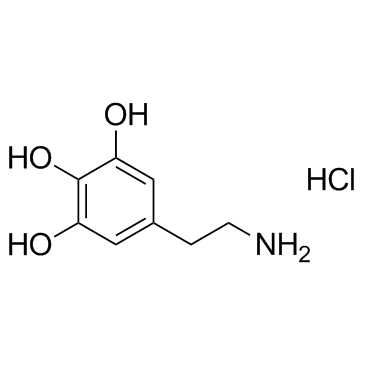
-
GC33698
5-Hydroxyindole-3-acetic acid
5-HIAA, 5-Hydroxyindoleacetic Acid, 5-hydroxy IAA, NSC 90432
5-히드록시인돌-3-아세트산은 세로토닌 또는 메타네프린의 주요 대사산물이며 신경내분비 종양의 바이오마커로 사용될 수 있습니다.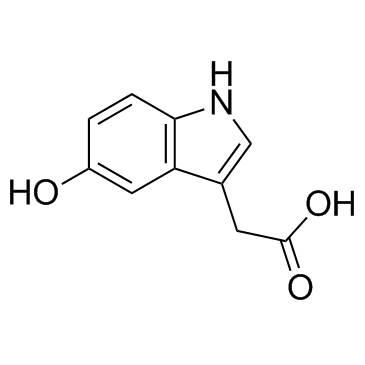
-
GC42551
5-hydroxymethyl Tolterodine (formate)
5-HMT, Desfesoterodine, PNU 200577
5-hydroxymethyl Tolterodine is an active metabolite of the muscarinic acetylcholine receptor antagonists tolterodine and fesoterodine.
-
GC30189
5-Hydroxymethyl-2-furancarboxylic acid
NSC 40739
5-히드록시메틸-2-푸란카르복실산은 체내에서 5-히드록시메틸-2-푸르푸랄(HMF)의 주요 대사산물이며 신장으로 제거됩니다.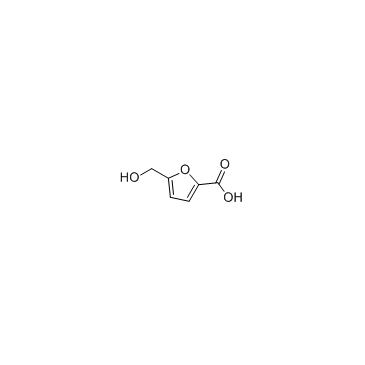
-
GC33613
5-Hydroxymethyluracil
5-Hydroxymethyluracil은 산화적 DNA 손상의 산물입니다.
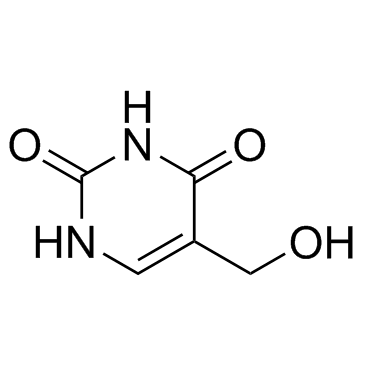
-
GC62810
5-Hydroxytryptamine creatinine sulfate monohydrate
5-Hydroxytryptamine creatinine sulfate monohydrate는 내인성 대사 산물입니다.
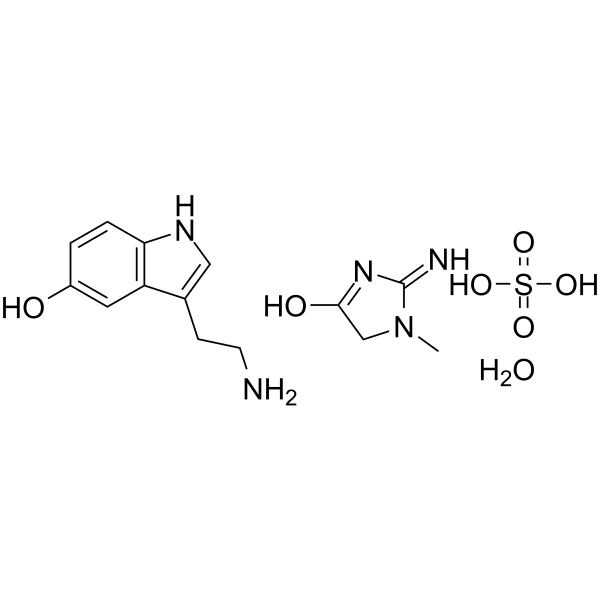
-
GC67951
5-Hydroxytryptophol-d4
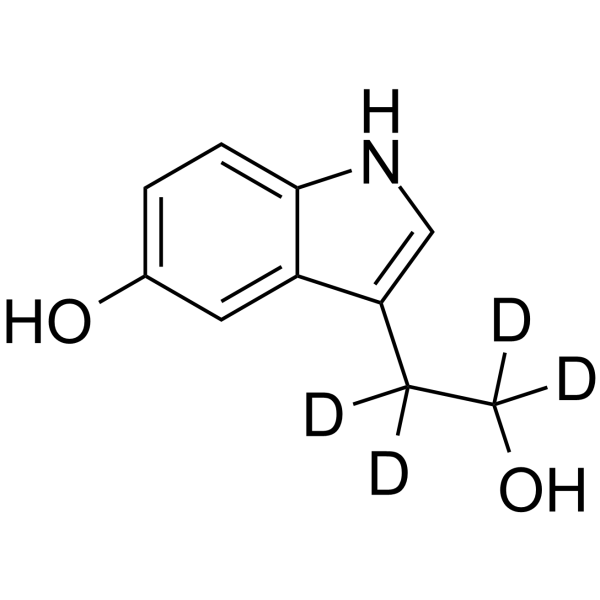
-
GC31997
5-Lipoxygenase-In-1
5-리폭시게나제-In-1은 특허 EP 331232 A2, 표 4, 화합물 실시예 4.10에서 추출한 5-리폭시게나제 억제제입니다.
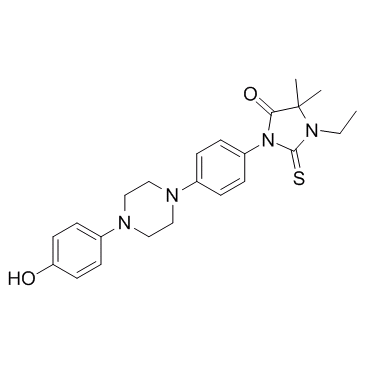
-
GC66031
5-LOX-IN-1
5-LOX-IN-1(화합물 2b)은 IC50 값이 2.3 μ인 인간 5-Lipoxygenase(5-LOX)의 억제제입니다. 821d96072c2d58d8970e76f526b0f6b85-LOX-IN-1은 염증 연구에 사용할 수 있습니다.821d96072c2d58d8970e76f526b0f6b8
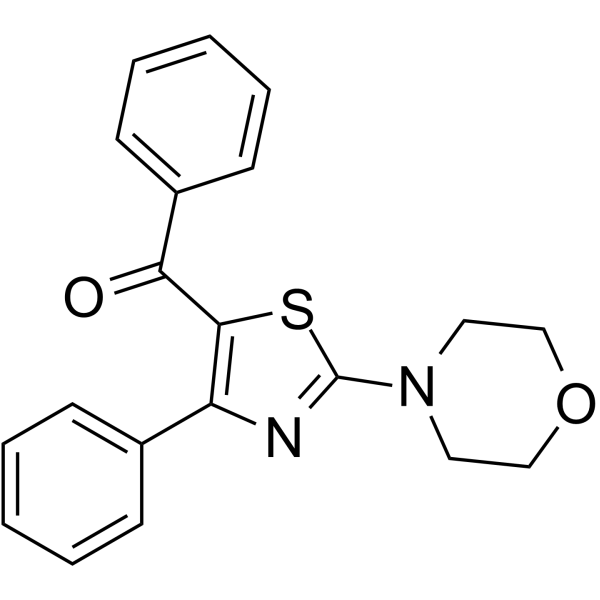
-
GC62811
5-Methoxy-5-oxopentanoic acid
5-Methoxy-5-oxopentanoic acid는 내인성 대사 산물입니다.
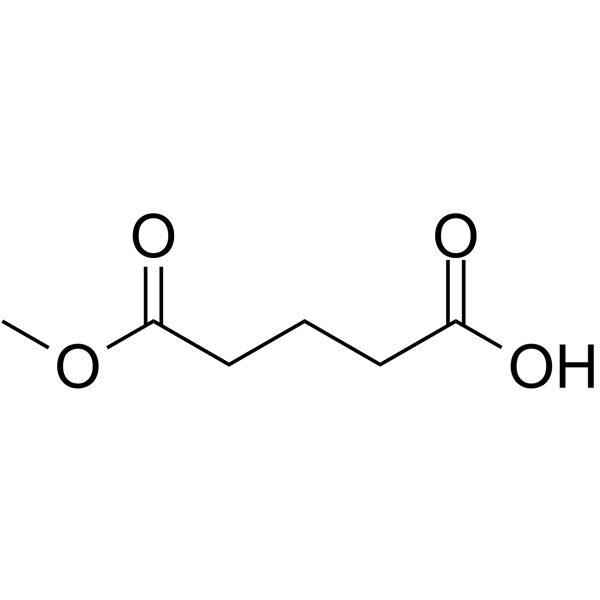
-
GC38058
5-Methoxy-DL-tryptophan
DL-5-Methoxytryptophan, DL-5-MTP, 5-Methoxytryptophan
5-Methoxy-DL-트립토판은 내인성 대사 산물입니다.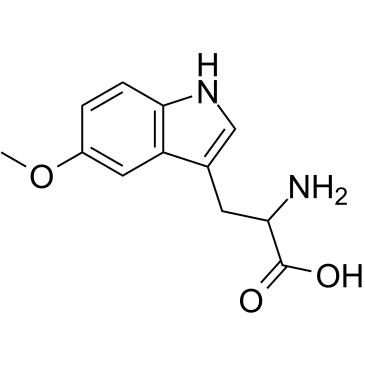
-
GC46078
5-Methoxyindole-3-acetic acid
5-methoxy IAA, 5-Methoxyindoleacetic Acid, 5-MIAA
5-메톡시인돌-3-아세트산은 멜라토닌의 대사 산물입니다.
-
GC64182
5-Methoxytryptamine hydrochloride
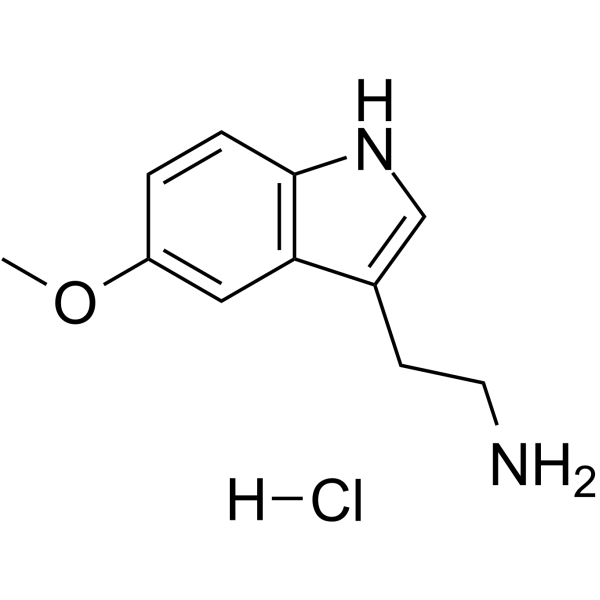
-
GC30712
5-Methoxytryptophol
5-MTOH
5-메톡시트립토폴은 송과체에 존재하는 천연 인돌입니다.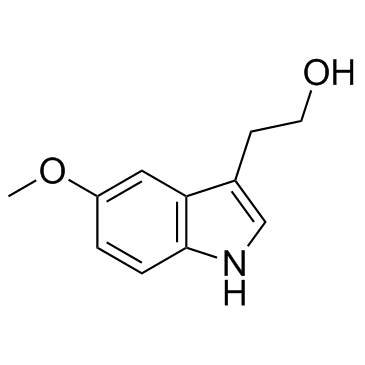
-
GC42562
5-Methyl-2'-deoxycytidine
5Methyldeoxycytidine
단일 가닥 DNA의 5-Methyl-2'-deoxycytidine은 cis로 작용하여 de novo DNA methylation 신호를 보낼 수 있습니다.
-
GC33526
5-Methylcytidine
NSC 363933
5-Methylcytidine은 여러 생체 유체에서 검출되는 pyrimidine nucleoside입니다.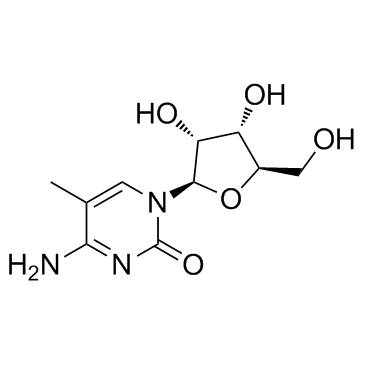
-
GC35166
5-Methylcytosine
5-메틸시토신은 잘 규명된 DNA 변형이며 또한 원핵생물과 진핵생물 모두에서 풍부한 비암호화 RNA에 주로 존재합니다.
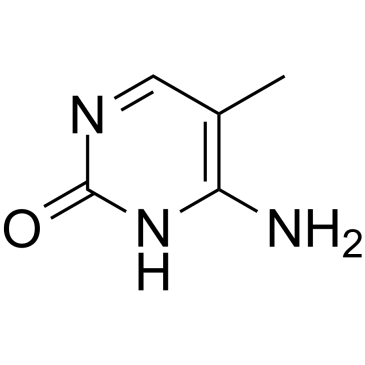
-
GC34881
5-Methyltetrahydrofolic acid
5-Methyltetrahydrofolic acid(5-Methyl THF)는 엽산의 생물학적 활성 형태입니다.
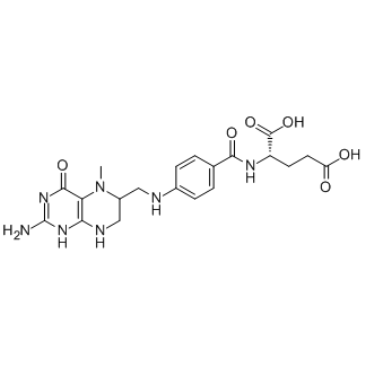
-
GC33514
5-Methyluridine
Ribothymidine, Thymine riboside
5-Methyluridine은 인간 체액에서 발견되는 내인성 메틸화 뉴클레오시드입니다.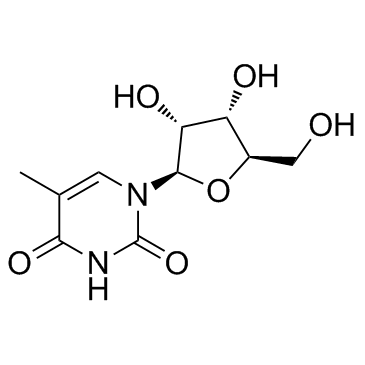
-
GC68228
5-Nitro-1,10-phenanthroline
5-NP

-
GC35168
5-O-Demethylnobiletin
5-hydroxy Nob, NSC 618927
5-O-Demethylnobiletin(5-Demethylnobiletin)은 Sideritis tragoriganum에서 분리된 폴리메톡시플라본으로 COX-2의 발현에 영향을 미치지 않으면서 5-LOX(IC50=0.1μM)를 직접적으로 억제합니다.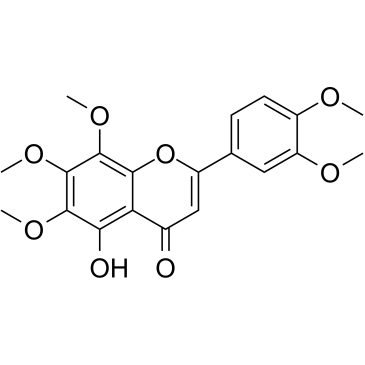
-
GC41310
5-Octyl-α-ketoglutarate
αKG octyl ester
In addition to its role in the Krebs cycle, α-ketoglutarate (2-oxoglutarate) has roles as a substrate or modulator of enzymes.
-
GC40380
5-OxoETE
5-KETE
5-OxoETE is a polyunsaturated keto acid formed by the oxidation of 5-HETE in human neutrophils by a specific dehydrogenase.

-
GC41322
5-OxoETE methyl ester
5-KETE methyl ester
5-OxoETE methyl ester is an esterified form of the polyunsaturated keto acid 5-oxoETE.
-
GC62814
5-Phenylvaleric acid
5-Phenylvaleric acid(5-Phenylpentanoic acid)는 박테리아 기원의 펜탄산으로 인간 생체 유체에서 가끔 발견됩니다.
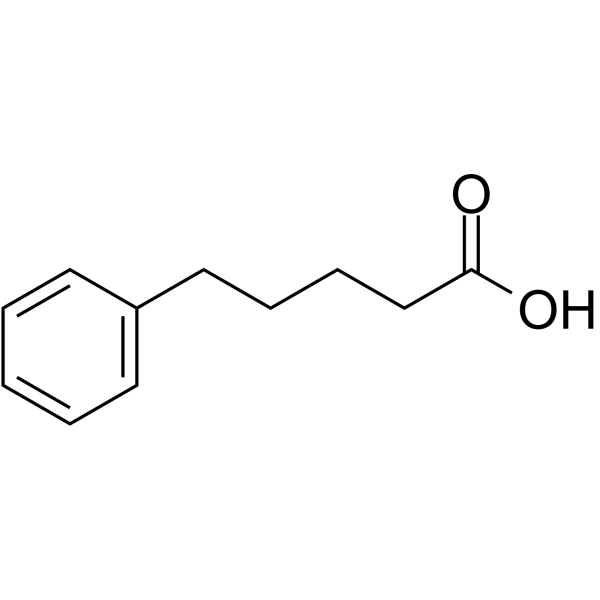
-
GC11101
5-R-Rivaroxaban
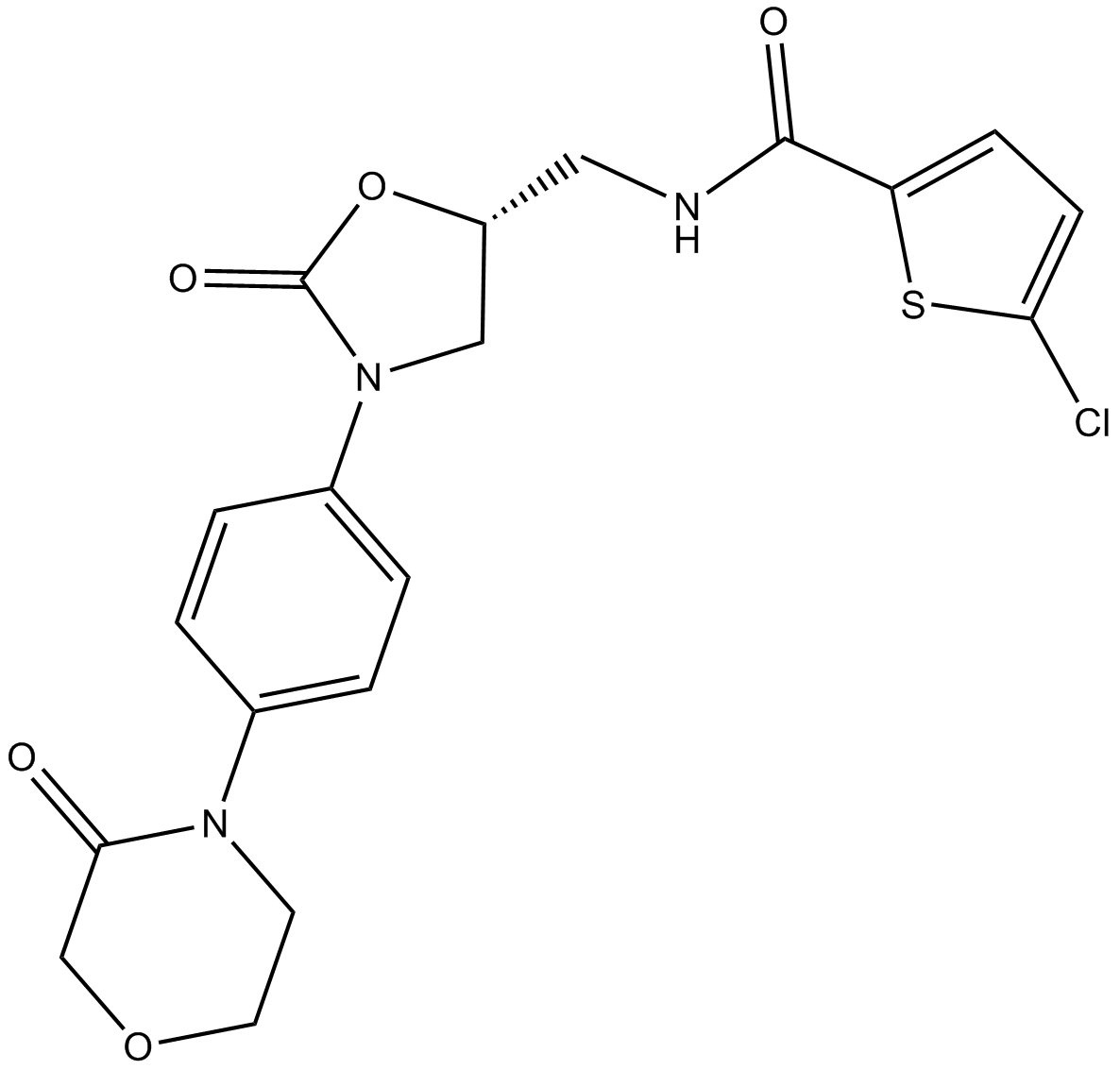
-
GC32410
5a-Pregnane-3,20-dione
5α-DHP, NSC 18319, 5α-Pregnanedione
5a-Pregnane-3,20-dione은 내인성 프로게스테론 대사 산물입니다.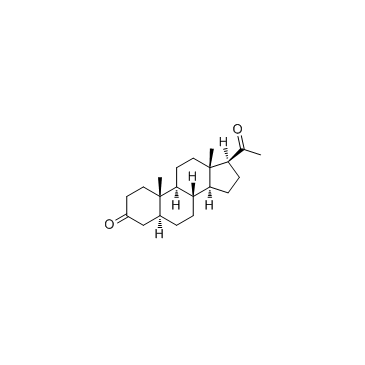
-
GC68374
5a-Pregnane-3,20-dione-d6
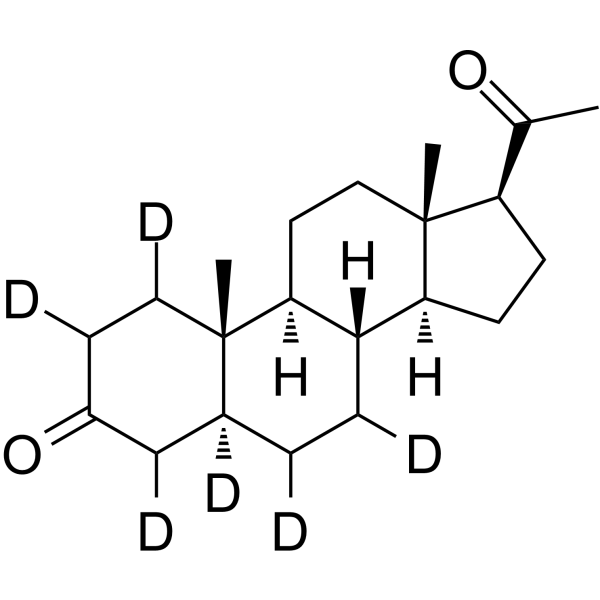
-
GC42586
6α-hydroxy Paclitaxel
6α-hydroxy Taxol
6α-하이드록시 파클리탁셀은 파클리탁셀의 1차 대사산물입니다. 6α-하이드록시 파클리탁셀은 파클리탁셀과 유사한 억제 효능으로 유기 음이온 수송 폴리펩타이드 1B1/SLCO1B1(OATP1B1)에 대한 시간 의존적 효과를 유지하지만, 더 이상 OATP1B3의 시간 의존적 억제를 나타내지 않습니다. 6α-hydroxy Paclitaxel은 암 연구에 사용할 수 있습니다.
-
GC49676
6β-hydroxy Budesonide
A metabolite of budesonide
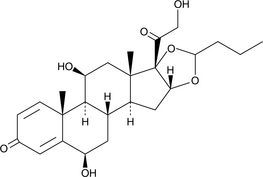
-
GC45969
6β-hydroxy Eplerenone
A major metabolite of eplerenone

-
GC49629
6β-hydroxy Prednisolone
A metabolite of prednisolone

-
GC41424
6(S)-Lipoxin A4
5(S),6(S)-Lipoxin A4, 6-epi-Lipoxin A4, 6(S)-LXA4, 5(S),6(S),15(S)-TriHETE
The lipoxins are trihydroxy fatty acids containing a 7,9,11,13-conjugated tetraene.
-
GC49749
6-Deoxypenciclovir
BRL 42359
An inactive metabolite of famciclovir
-
GC41224
6-diazo-5-oxo-L-nor-Leucine
DON, NSC 7365
6-Diazo-5-oxo-L-nor-Leucine (DON)은 글루타민 아날로그로, 글루타미나아제를 억제하는 성분입니다. 이는 선택적으로 작용하며, 글루탐을 사용하는 효소의 기전 기반 불활성화제입니다[1-3].

-
GC42578
6-Formylpterin
2-Amino-6-formylpteridin-4-one, 6-FP, Pterin-6-aldehyde
Xanthine oxidase (XO) generates reactive oxygen species, including hydrogen peroxide (H2O2), as it oxidizes specific substrates in the presence of water and oxygen.
-
GC18632
6-hydroxy Bexarotene
6-hydroxy Bexarotene is an oxidative metabolite of bexarotene , a high-affinity ligand for retinoid X receptors (RXRs).
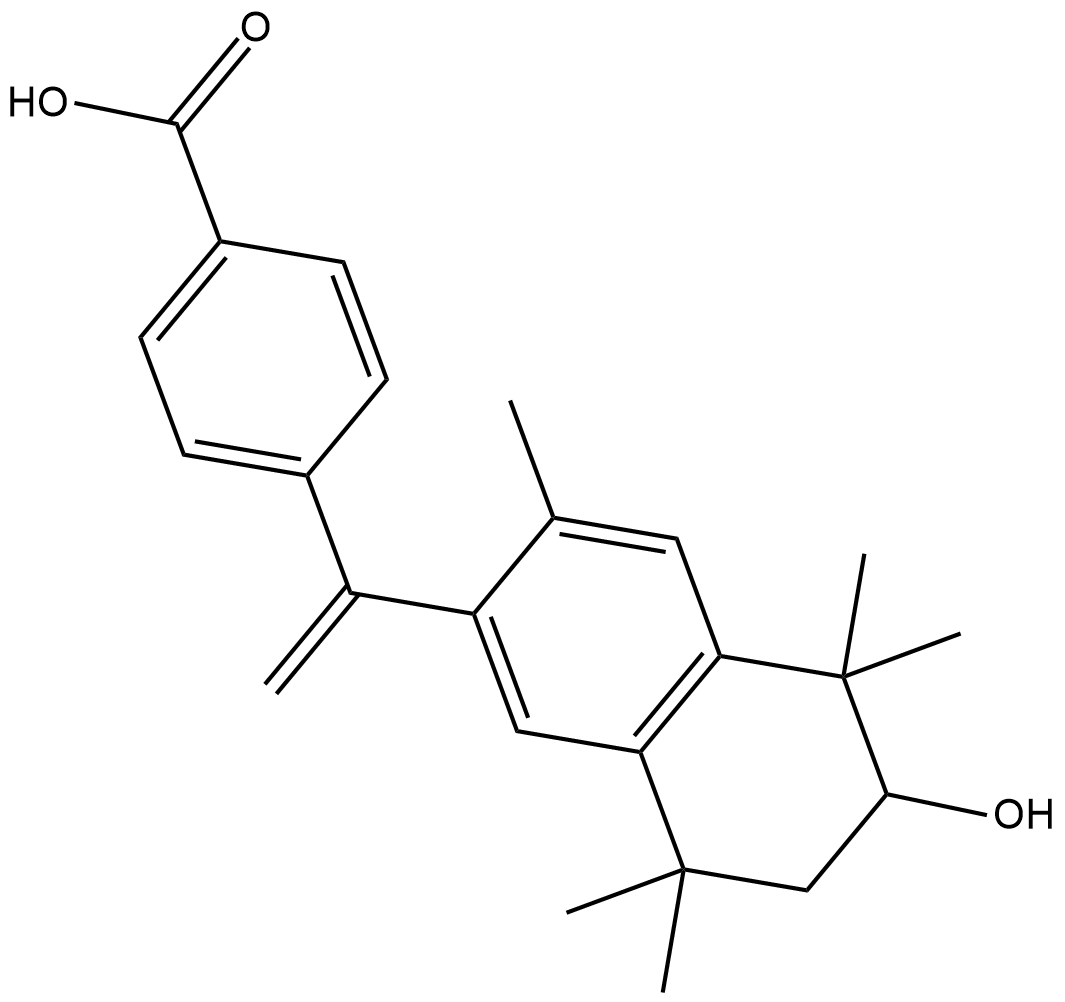
-
GC42580
6-hydroxy Chlorzoxazone
NSC 24955
6-hydroxy Chlorzoxazone is a metabolite of chlorzoxazone.

-
GC18219
6-hydroxy Warfarin
6-hydroxy Warfarin is a metabolite of (+)-warfarin , which is a weaker vitamin K antagonist than (-)-warfarin .
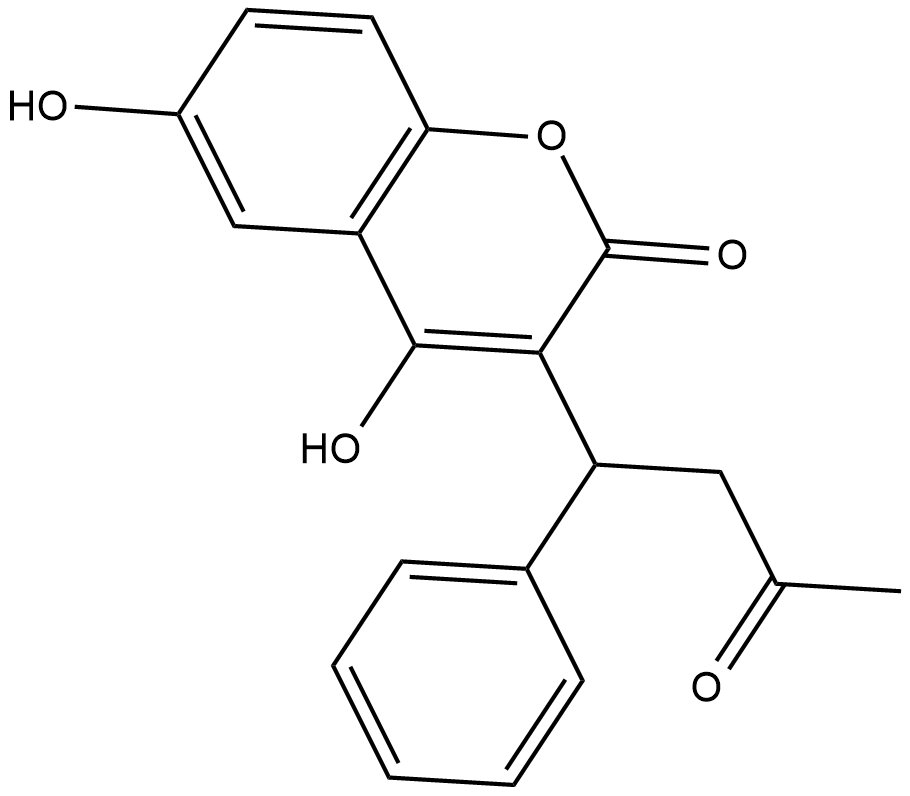
-
GC67988
6-Hydroxybenzbromarone
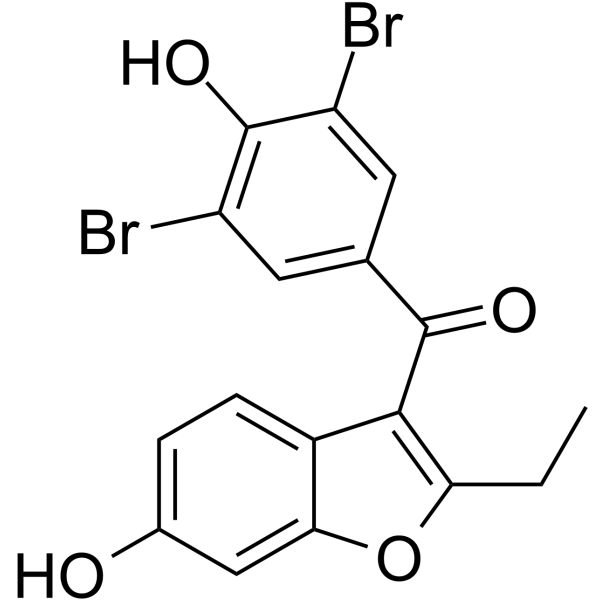
-
GC33704
6-Hydroxymelatonin
6-OHM
6-하이드록시멜라토닌은 시토크롬 P450(CYP) 1A2에 의해 대사되는 멜라토닌의 주요 대사입니다.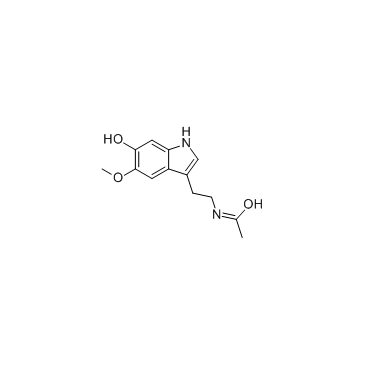
-
GC38278
6-Hydroxynicotinic acid
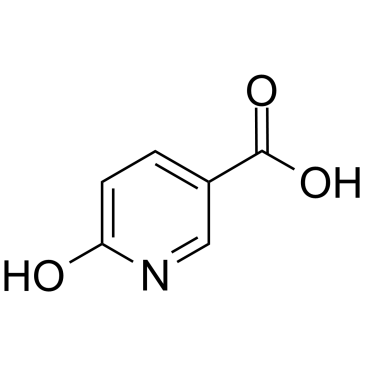
-
GC10067
6-Hydroxynicotinic acid
6-하이드록시니코틴산은 내인성 대사 산물입니다.
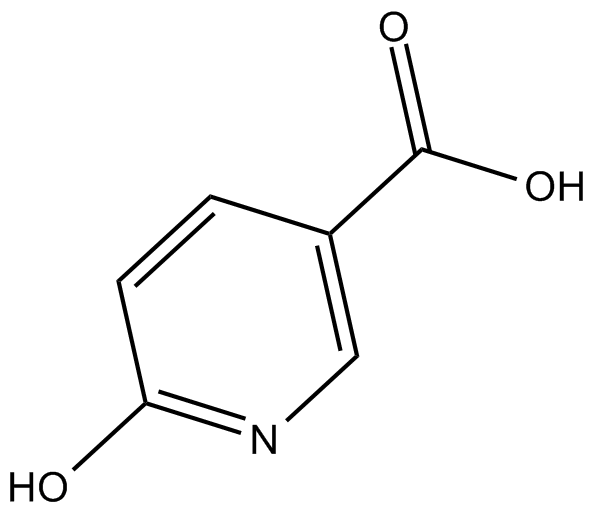
-
GC62816
6-Hydroxypyridin-2(1H)-one hydrochloride
6-히드록시피리딘-2(1H)-온 염산염은 내인성 대사산물입니다.
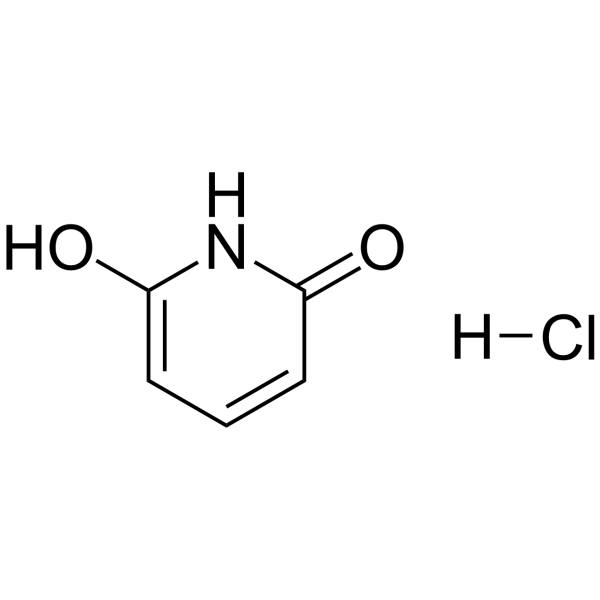
-
GC49235
6-Methylmercaptopurine
6-MMP, 6-(Methylthio)purine, NSC 20105, SQ 8,343
A metabolite of 6-mercaptopurine
-
GC49488
6-Methylmercaptopurine-d3
6-MMP-d3, 6-(Methylthio)purine-d3
An internal standard for the quantification of 6-MMP
-
GC64741
6-Methylnicotinamide
니코틴아미드의 유도체인 6-메틸니코틴아미드는 내인성 대사산물입니다.
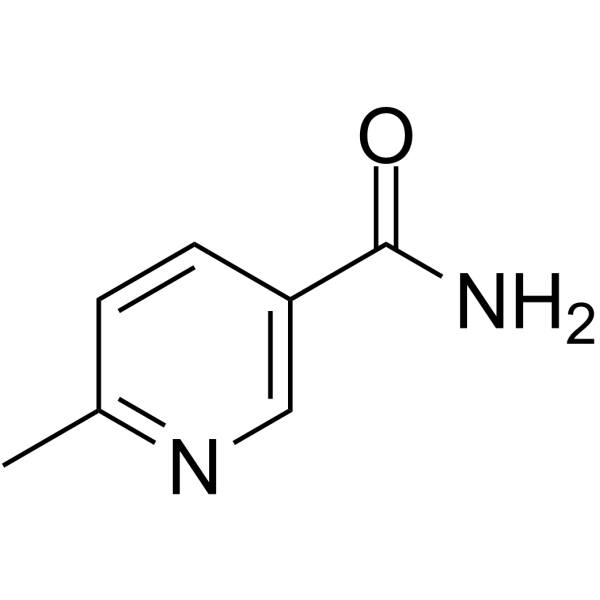
-
GC48721
6-O-Demethyl Griseofulvin
6-Demethylgriseofulvin
A metabolite of griseofulvin
-
GC42584
6-O-desmethyl Donepezil
6-O-desmethyl Donepezil is an active metabolite of the acetylcholinesterase inhibitor donepezil.

-
GC65015
6-Phosphogluconic acid trisodium
6-포스포글루콘산 삼나트륨은 글루코스 6-포스페이트의 경우 48μM 및 과당 6-포스페이트의 경우 42μM의 Kis를 갖는 강력하고 경쟁력 있는 포스포글루코스 이성화효소(PGI) 억제제입니다.
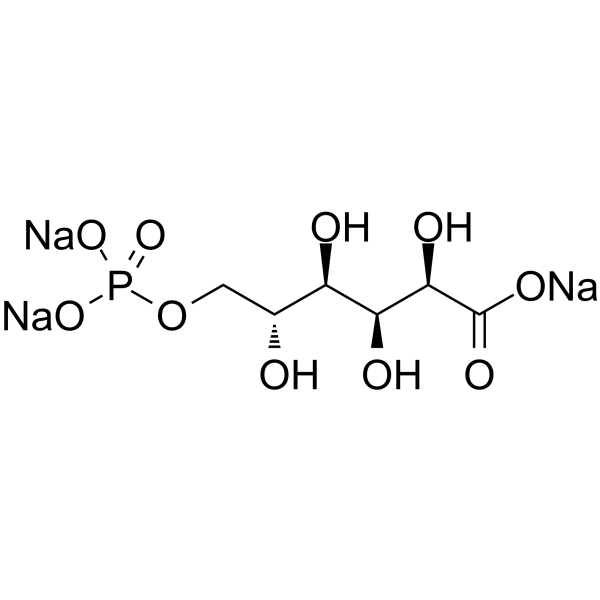
-
GC50613
673 A
ALDH1A inhibitor; depletes CD133+ cancer stem cells (CSC)

-
GC18335
6β-hydroxy Dexamethasone
6-hydroxyDEX, 6β-hydroxydexamethasone, 6OH-DEX
6β-hydroxy Dexamethasone is a metabolite of dexamethasone that is more hydrophilic than the parent compound.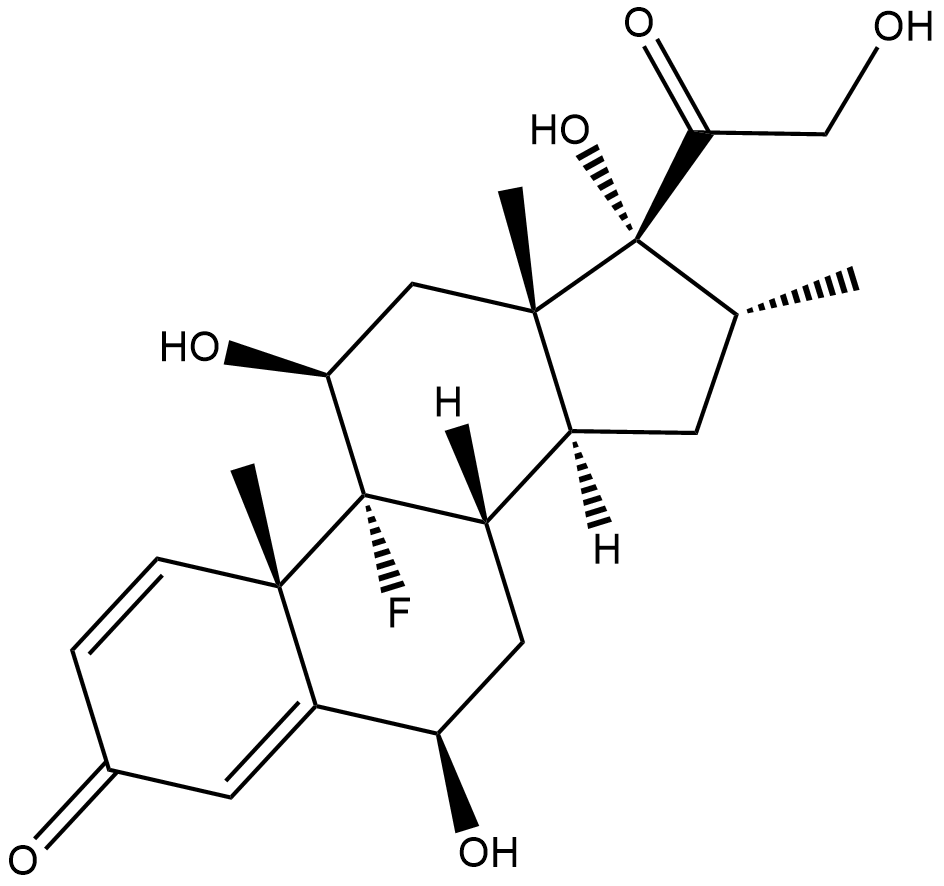
-
GC40087
7α-hydroxy-4-Cholesten-3-one
7α-hydroxy-4-Cholesten-3-one은 콜레스테롤에서 담즙산 합성의 중간체입니다.

-
GC49298
7α-Thiomethylspironolactone
SC 26519
A major metabolite of spironolactone
-
GC49391
7α-Thiospironolactone
Deacetylspironolactone, Mercaptospironolactone, SC-24813, 7α-Thio-SL
An active metabolite of spironolactone
-
GC46732
7(S),17(S)-dihydroxy-8(E),10(Z),13(Z),15(E),19(Z)-Docosapentaenoic Acid
7(S),17(S)hydroxy DPA
A metabolite of DPA with antiinflammatory properties
-
GC10533
7,8-dihydro-L-Biopterin
BH2, Dihydrobiopterin
7,8-Dihydro-L-biopterin은 tetrahydrobiopterin의 산화 생성물입니다.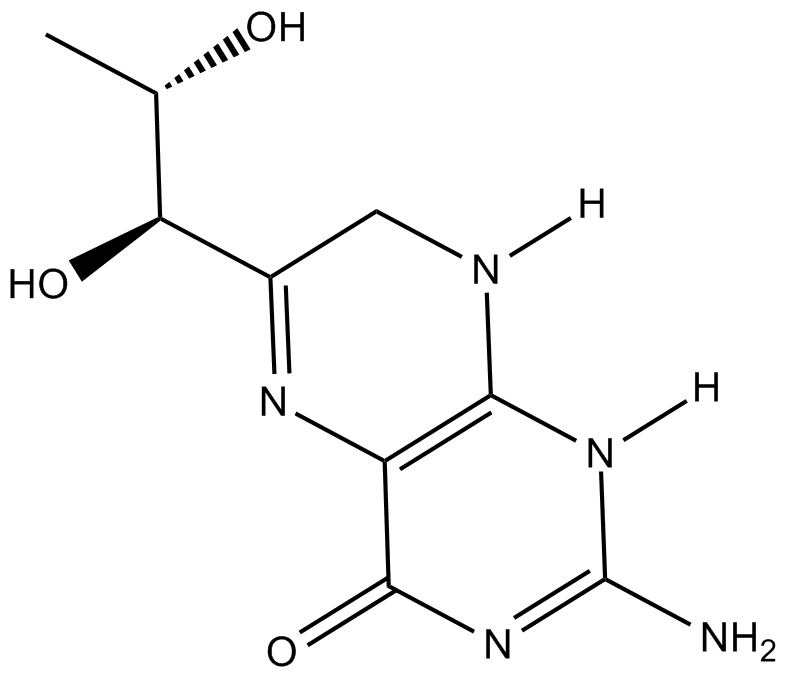
-
GC45673
7,8-Dihydroneopterin
D-erythro-7,8-Dihydroneopterin
염증 마커인 7,8-디히드로네옵테린은 산화질소 합성효소(iNOS) 발현의 향상을 통해 성상교세포와 뉴런에서 세포 사멸을 유도합니다.
-
GC33450
7-Dehydrocholesterol
Provitamin D3
7-Dehydrocholesterol은 콜레스테롤과 비타민 D3의 생합성 전구체입니다.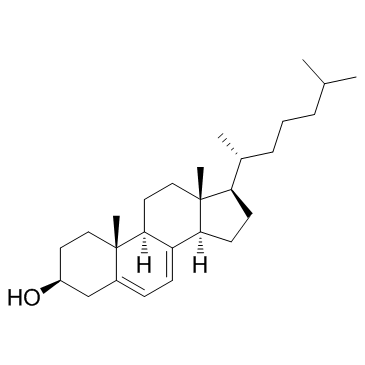
-
GC40978
7-epi Maresin 1
7(S)MaR1, 7(S)Maresin 1
7-epi Maresin 1 is the inactive 7(S) epimer of Maresin 1, which contains a 7(R) hydroxyl group.
-
GC48649
7-hydroxy Chlorpromazine (hydrochloride)
An active metabolite of chlorpromazine

-
GC42606
7-hydroxy Coumarin Glucuronide (sodium salt)
7-hydroxy Coumarin glucuronide is a 7-hydroxy coumarin phase II metabolite that can be used as a standard for the analysis of 7-hydroxy coumarin metabolism.

-
GC42607
7-hydroxy Coumarin sulfate (potassium salt)
7-HC, 7HCS
7-hydroxy Coumarin sulfate is a phase II metabolite of coumarin that can be used as an internal standard for the analysis of 7-hydroxy coumarin metabolism using GC- or LC-MS.
-
GC49748
7-hydroxy Etodolac
An inactive metabolite of etodolac

-
GC49051
7-hydroxy Methotrexate
NSC 380962, 7-hydroxy MTX
7-하이드록시 메토트렉세이트는 메토트렉세이트의 주요 대사 산물입니다.
-
GC42608
7-hydroxy Methotrexate (sodium salt)
7-hydroxy MTX
7-hydroxy Methotrexate (7-hydroxy MTX) is a phase I metabolite of MTX, which is converted by hepatic aldehyde oxidases.
